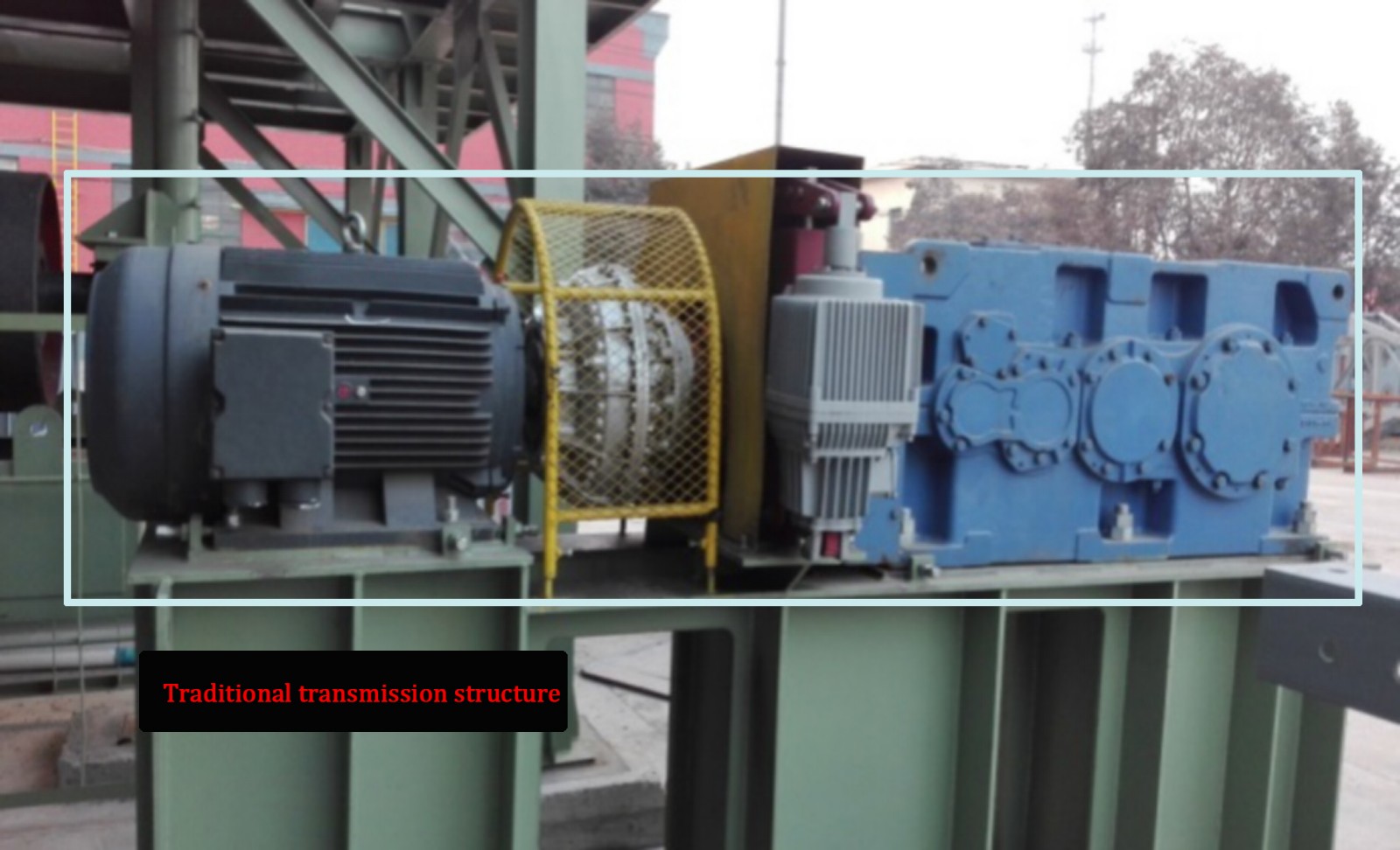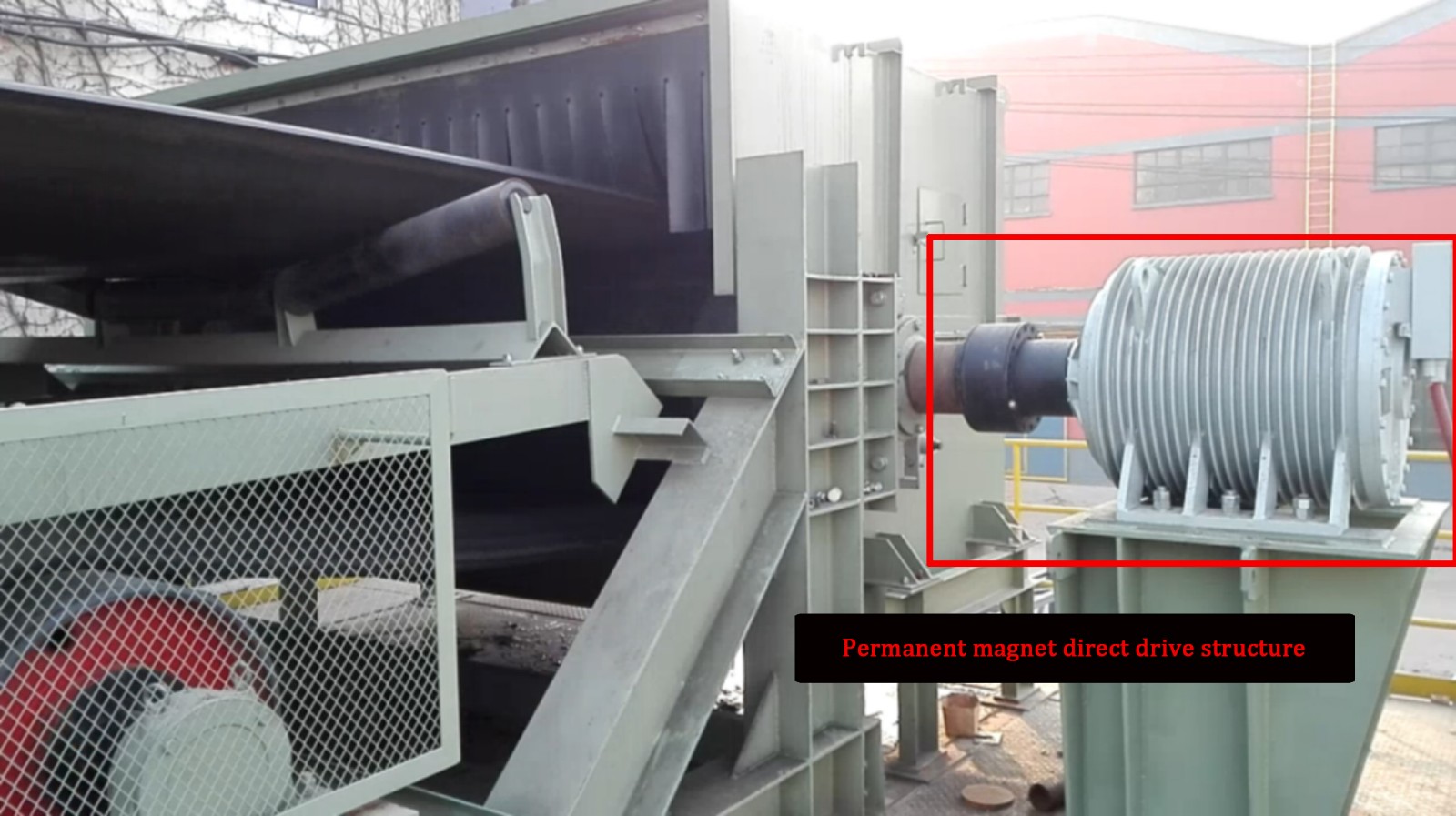Traditional applications of belt drive equipment:
Traditional belt conveyor structure: using asynchronous motor + reducer, hydraulic coupler structure to drive the drum;
Through the central control room, the motors on the line are controlled.
Asynchronous motor drive has the following problems:
1. Low power factor and high energy consumption;
2. Direct drive with power frequency, the starting current is large;
3. The power supply transformer has a larger volume, which is not stable during start-up and has a certain impact on the belt.
4. There is no special control equipment, and the running data cannot be monitored in real time, and the centralized control effect is poor.
5. The front end reducer has large mechanical loss, low transmission rate, low operating efficiency and high energy consumption, which does not meet the requirements of energy saving and environmental protection;
6. The reducer is large in size, complicated in structure, difficult to install, high in failure rate and large in maintenance:
7. Change the oil frequently;
8. Installation and maintenance costs are more invested and the cost performance is low.
Comparison of traditional asynchronous motor plus gearbox with low-speed high-power permanent magnet motor:
Original system: After asynchronous motor plus gearbox and fluid coupling replacement: low speed high power permanent magnet drive system


The advantages of the belt conveyor using a dedicated low-speed high-power permanent magnet drive system are significant:
Simplifies the structure of the device and increases the reliability of the device;
Overcome the complicated maintenance of the gear box, and the basic realization can be maintenance-free;
High system reliability, low maintenance costs, fewer equipment spare parts, higher system efficiency, effective energy saving; space saving;
A higher torque inertia ratio can be obtained for quick control; low vibration and low noise.
Parameters | |
torque range | 3000~100,000N·m |
seat No. | 315,355,400,500,560 |
voltage | 380VAC, 660VAC, 1140VAC, 3300VAC or 6K,10K |
speed range | 0~60, 75, 90rpm/min, or customized as per customers' requirement |
cooling type | natural cooling, water cooling |
installation | horizontal installed or customized as per customers' requirement |
Protection grade | IP54 (higher grades can be customized) |
shaft standard | circular shaft with keyway, hollow shaft with key, hollow shaft with internal spline |
The low-speed high-power permanent magnet drive system for belt conveyor is a high-efficiency and energy-saving direct drive electric drive system. The system directly drives the load equipment. It is different from the traditional asynchronous motor in the selection, and needs to be adjusted according to the actual speed range of the equipment. The load torque is used for model selection. The specific selection rules are as follows:
1. According to the belt conveyor speed and the outer diameter of the drum to determine the motor speed range, select the motor drive system with the speed range not less than the actual demand and the closest, the standard rated speed is 0 ~ 60r / min, 0 ~ 75r / min, 0 ~90r/min, other speed adjustment ranges can be adjusted and customized according to the actual needs of customers.
2. Determine the torque required by the belt motor, select the appropriate permanent magnet drive system for the belt machine according to the torque, and calculate the actual torque of the equipment according to the traditional asynchronous motor parameters and the speed ratio of the reducer.
3. Defining the rated voltage of the motor, the torque of the motor below 30,000N.m is 380V, 660V, 1140V, and the motor voltage above 30,000N.m is 1140V, 3300, 6K, 10K. Other voltage levels can be customized according to customer requirements.
4. The structure of the motor is separated from the explosion type and the common type. The cooling method has natural cooling and water cooling, and is selected according to the actual needs of the user.
5. The motor can be designed and produced according to the requirements of the user's technical parameters.
6. If the motor parameters are clear, the model selection can be made according to the sample parameter table.

